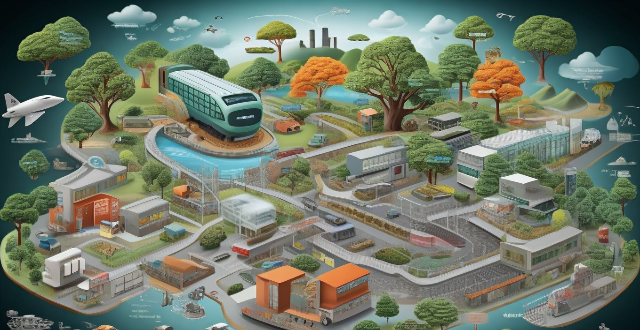Hyperloop transportation systems face technical, economic, and social-environmental challenges. Technical issues include propulsion and energy needs, safety concerns, maintenance, and lack of regulations. Economically, high costs and market acceptance are significant hurdles. Socially and environmentally, public perception and potential impact are concerns. Despite these challenges, hyperloop offers opportunities for rapid transit, sustainability, automation, economic benefits, societal advantages, and environmental leadership.

Challenges of Hyperloop Transportation Systems
Technical Challenges
- Propulsion and Energy: The hyperloop relies on advanced propulsion systems such as magnetic levitation or air compressors, which require significant energy input. Ensuring efficient energy management is crucial for sustainability.
- Safety Concerns: High-speed travel in a sealed tube presents unique safety challenges, including emergency evacuations and accident prevention.
- Maintenance and Reliability: The system must be designed to minimize maintenance needs while ensuring high reliability for continuous operation.
- Regulation and Standardization: There is a lack of regulatory frameworks for hyperloop technology, making it difficult to ensure uniform safety and operational standards.
Economic Challenges
- High Costs: Initial investment for building hyperloop infrastructure is substantial, and the return on investment may take many years.
- Market Acceptance: Hyperloop is an unproven technology, and gaining public trust and market acceptance can be challenging.
- Competition with Existing Infrastructure: Hyperloop must compete with established modes of transportation that have mature business models and infrastructure already in place.
Social and Environmental Challenges
- Public Perception: There may be public resistance to new technologies due to concerns over job displacement or environmental impact.
- Environmental Impact: While hyperloop aims to be eco-friendly, the construction and operation could still have significant environmental effects.
Opportunities of Hyperloop Transportation Systems
Technological Innovation
- Rapid Transit: Hyperloop has the potential to drastically reduce travel times between cities, transforming commuting patterns.
- Efficiency and Sustainability: The system promises low energy consumption and reduced carbon emissions compared to air travel or road transport.
- Automation and AI: The control systems required for hyperloop operation could drive advancements in automation and artificial intelligence.
Economic Benefits
- Infrastructure Development: Construction of hyperloop networks could stimulate local economies and create jobs.
- Enhanced Connectivity: Improved connectivity between regions could boost trade, tourism, and cultural exchange.
- New Business Models: The hyperloop ecosystem could give rise to new service providers, technology developers, and operators.
Societal Advantages
- Reduced Congestion: By taking vehicles off roads and reducing air traffic, hyperloop could alleviate congestion in urban areas.
- Improved Quality of Life: Faster, more efficient transportation could lead to better work-life balance and improved quality of life.
- Environmental Leadership: As an eco-friendly alternative to traditional transport, hyperloop could position countries as leaders in sustainable technology.
In conclusion, the development of hyperloop transportation systems presents both significant challenges and exciting opportunities. Addressing these challenges will be critical for the successful implementation and widespread adoption of hyperloop technology, which could revolutionize the way we think about distance and transportation.